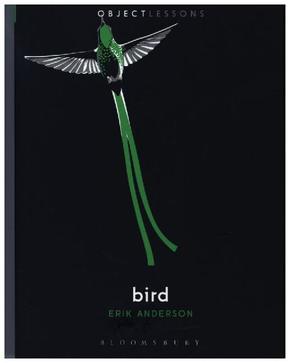
| Verlag | Bloomsbury Academic |
| Auflage | 2020 |
| Seiten | 176 |
| Format | 12,2 x 16,7 x 1,3 cm |
| Gewicht | 165 g |
| Artikeltyp | Englisches Buch |
| Reihe | Object Lessons |
| ISBN-10 | 1501353357 |
| EAN | 9781501353352 |
| Bestell-Nr | 50135335UA |
We tend to have romanticized and sentimental ideas about birds. But what is it about birds that so captivates us? And what does this captivation, in its various forms, say about us humans?
Object Lessons is a series of short, beautifully designed books about the hidden lives of ordinary things.
Hope, as Emily Dickinson famously wrote, is the thing with feathers. Erik Anderson, on the other hand, regards our obsession with birds as too sentimental, too precious. Birds don't express hope. They express themselves. But this tension between the versions of nature that lodge in our minds and the realities that surround us is the central theme of Bird.
This is no field guide. It's something far more unusual and idiosyncratic, balancing science with story, anatomy with metaphor, habitat with history. Anderson illuminates the dark underbelly of our bird fetish and offers a fresh, alternative vision of one of nature's most beloved objects.
Object Lessons is published in partnership with an essay series in The Atlantic.
Inhaltsverzeichnis:
1 Put a Bird on It
2 The Hater's Guide to Birds
3 The Buoy Bird
4 The Hater's Guide to Birds
5 What a Name Can Do
6 The Hater's Guide to Birds
7 There Never Was a Bird
Acknowledgments
Index
Rezension:
Anderson follows the trail of fallen tail feathers across the grid, articulating his findings with an undeniable personal touch, and a philosophical sting that leaves you wondering, 'what made us fall so deeply in love with birds? Why did it stick? What is beauty?' among other considerations. Anderson is the lead explorer in a journey that, for many, is long overdue. Before we know it, the journey extends farther than bird-watching and observation, and we are left looking at nature with the absence of our human goggles. 433 Magazine
